You are preparing for TEOTWAWKI and you have, for whatever reason decided that when times get tough, you will bug in. For those of you unfamiliar with the term, this means that you plan to stay where you are, in your current home, whether you are in the city or in a rural area.
The opposite is to bug out, which means that you have an alternate location that you have set up and prepared to take you through the long haul if you need to get out of Dodge.
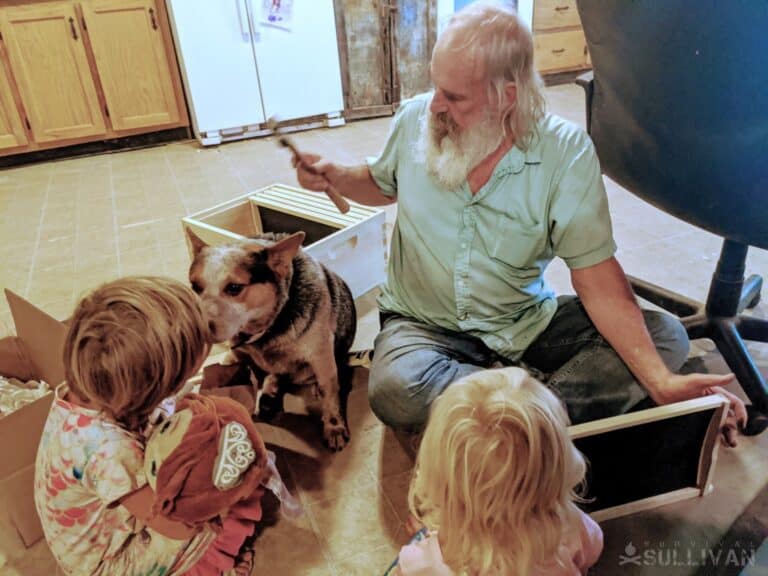
There are several reasons why you might make the decision to bug in. Maybe you feel more secure in your home than you do anywhere else or perhaps you simply have nowhere else to go.
You might have a family member or dependent that can’t travel. Whatever the reason, if you are going to bug in, then you need to be fully prepared in your home. Here is everything you need to know to do just that.
Planning and preparing to bug in is one thing. You don’t need to convince most people of the wisdom inherent in a home field advantage when trouble strikes. You’re almost always better off going with what you know instead of the unknown, as I described above.
However, when you are talking about truly long-term bug-in survival, and in this case I define it as continuing to exist and live in your current location without any societal support, you have some major obstacles in your way.
It is possible to prepare for and train around these obstacles, but you must be honest and clear about what you are facing and start doing what you need to do diligently, now, well before the fateful day comes.
Table of Contents
5 Very Good Reasons to Bug In
Let’s elaborate on why bugging in is the best option under most circumstances – because most of the time it is the best option. Here are a number of reasons why you should bug in, rather than bugging out:
Reason #1. In most circumstances you are safer at home than you would be out on the road.
Obviously, this would not be the case if there is a natural disaster that threatens your home or if there is imminent danger from looters or a pandemic and the city becomes far too dangerous to stay in.
Reason #2. If you don’t have somewhere to go that is ALREADY stocked and prepped, then you are driving – or more likely walking – into the wilderness with minimal survival gear or trying to lug with you everything you need, which is not practical.
It is very difficult to survive in the wilderness, even for people who know what they are doing.
Reason #3. You know what your immediate surroundings are like when you are at home, but when you leave home, you have no idea what you might have to face. As the saying goes, “Better the devil you know than the devil you don’t.”
Unless you have a ham radio or some way to find out what the world outside your immediate area is like, leaving home is not a risk you should take without really needing to.
Reason #4. Away from home, you are a stranger. On the road, you are a stranger. At home, bugging in, the people around you know you, which makes you less of a threat and more likely to have a community to rely on.
Reason #5. If you aren’t all together (assuming you are not a one-person show) when the SHTF, then bugging out will make it much more difficult to get everyone in your survival group together. If you are bugging in, then at least everyone knows to go home/to your house.
How Long Should You Bug in For?
Now that you have made the decision to bug in, you need to plan how long you will prepare to take care of yourself and your family. The government says you should have three days’ worth of food, water, and supplies for each person.
I say that’s ludicrous. I know people not far from me over the past two winters that went without electricity for close to two weeks after major winter storms.
Hurricane victims, provided their home is still intact, will likely have to go for longer in some situations. In other words, a weather event alone can cause you to need two or more weeks of food, water, and supplies to survive when bugging in.
I recommend that you begin with getting two weeks’ worth of food, water, and supplies immediately, then building on that over time and as your budget allows. If you have six months’ worth of food, water, and supplies, then you are well on your way to being prepared to outlast anything.
One years’ worth would be ideal because even if the event that happens is critical enough that the infrastructure doesn’t go back to normal in that amount of time, you will have a cushion of time to plan your next move without having to worry about where your next meal is coming from.
But how about prepping for a truly long term survival situation? How about surviving a genuine collapse of society, or even a global catastrophe?
To do that, you are going to have to take your planning and preps to the next level. Prepping for a decade or longer scenario will be the ultimate test of your mettle.
Supplies and Storage
The first and most obvious consideration for preppers who want to go the distance when bugging in is going to be supplies. Even a handful of people will need a truly mountainous amount of goods in order to survive for years, much less a whole decade.
Food, water, medicine, cleaning supplies, raw materials and hardware, and much more. The sheer financial investment associated with accumulating the supplies is daunting to say the least, and the logistical element required to plan and transport these purchases overtime is a task unto itself.
And then you’ll have the truly difficult part of the equation for most of us: where do you store all of this stuff?! Ask any prepper who has been in the game for any length of time and you’ll get the knowing nods and chuckles regarding a lack of storage space.
Canned goods, ammo and first aid kits are peeking out from behind boxes on shelves, stuffed to the rafters in the attic and under every bed and other piece of furniture.
The lucky preppers are the ones who can devote an entire room or basement just for storing survival supplies.
Now, this only concerns several months or at most a year’s worth of supplies in an extreme example. How on Earth are you going to successfully and safely store a decade’s worth? This is an entirely separate challenge.
You might well need to consider devoting an entire part of your house to the endeavor, or else building an extension or out building for the purpose. As it turns out, most of us just don’t have a warehouse at our beck and call!
Beyond this, organizing and administrating your supplies will become truly a part-time job at this scale. Rotating a mountain of supplies will be a constant endeavor.
This alone will serve as a major stumbling block for preppers who want to be ready for ultra long-term bugging in.
Ongoing sanitation concerns and waste disposal
Sanitation is something that seasoned preppers spend a lot of time thinking about, particularly in the context of any long-term survival scenario but especially a bug-in scenario.
Failing to keep bodies and the surrounding environment clean is a surefire way to promote sickness. All sorts of illnesses, from viruses and bacteria to parasites, will blow through groups living in close quarters to each other.
Worse yet, they typically have an advantage due to stress, injuries and general malnutrition. Preventing such outbreaks is a priority.
But to do that the disposal of waste is also going to be of a Paramount concern, both from meal preparation and household garbage to copious human waste.
Virtually every household produces several pounds of garbage and food waste a day, and each and every adult produces at least a pound of solid fecal matter and several quarts of urine every single day.
All of this human waste and household garbage must be dealt with on a permanent and sustainable basis. Sure, that is easy enough when the trash trucks are running and you can just flush the toilet to get rid of it, but it is going to be a lot harder when that stops.
Removing trash and waste and simply bagging it or dumping it far from your home is one thing, but this might not be sustainable for long.
Encroachment of waste will make people miserable from the odor, promote illness and also attract a variety of pests who would eat from it or scavenge through it. This will further promote the transmission of disease.
Waste of all kinds can be burned, buried or taken very far away and simply dumped in a designated area, but this is something that must be accounted for for the long haul or else you and yours probably aren’t going to make it.
Security
Security will be, as always, an ongoing concern during a long term survival scenario.
Home defense and defense of the surrounding area will be paramount, and depending on where you live and the nature of the event that precipitated bugging in in the first place, this might be a higher priority or a lesser one.
Generally speaking, whenever society is disrupted at a fundamental level, whenever basic necessities are scarce or absent and whenever the rule of law is tenuous or toppled entirely you’ll have much to worry about from your fellow man.
The bottom line is that some people want what you have, and if they find out that you are better off than they are, or particularly well equipped, you will eventually become a pin on someone’s map board.
They might show up begging and pleading seeking sanctuary or supplies for them and theirs. They might not ask at all except by pointing a gun at you or just shooting you outright to take what they need.
In such scenarios the world will revert to the old ways. You’ll need a plan for dealing with such people over the long term, and this will require skills and organization among your group.
Some areas will be more defensible than others, and even places that seem safe or proof against the chaos and turmoil of urban areas might not stay that way.
Once places are completely stripped of all supplies, you will see lots of movement from people spreading out from these areas searching for more.
That means that even folks in rural areas with small populations might have cause to defend themselves from large bands of desperate survivors or outright marauders.
Sustainment
And finally, you have what might be the biggest challenge associated with long-term survival of any kind, even when bugging in. Sustainment is the name of the game.
You are sustaining yourself to survive, but as you and everyone else deplete resources over time, your survival challenges will become harder, or at least change.
you might think you are well off with a virtually limitless supply of tanked drinking water on your property, Fields full of crops and plenty of off-grid power supply solutions.
As is the prepper way, you have even prepared yourself further with plenty of water filtration technology, stored rations and several propane generators with fuel. Truly, you are good to go.
However, what would you do when all of those supplies run out, break or fail?
Water may become contaminated, spilled or evaporate. Fields can go barren. Fuel can be used up or generators break.
You might have the capability to fix these things and rectify the situation, and you should, but then again you might not or prove unable to.
If your survival success is tied up in any of these preps then you are in for a bad time. You must be able to sustain yourself by sourcing the things you need over the long haul:
- What other water sources are near your home that you could draw from?
- How might you purify that water to make it safe to drink?
- Do you have an alternative method to provide warmth by gathering and seasoning firewood?
- Can you repair and maintain your shelter and all your tools as they wear out and break down?
All of these questions and more must be answered if you’re going to survive for a decade or longer.
Then you have the human element to contend with. The fact of the matter is that people will get sick or injured and die. Older members of your family or group might well die of old age.
Stress, uncertainty and the loss of what was might capsize some people over time. Do you have what you need to provide entertainment to people, and will those resources prove sufficient in this new world?
To prepare yourself for truly long-term sustainment you must think through every survival necessity and every human requirement in excruciating detail accounting for every pertinent factor of your home, your group, your shortcomings and the surrounding area.
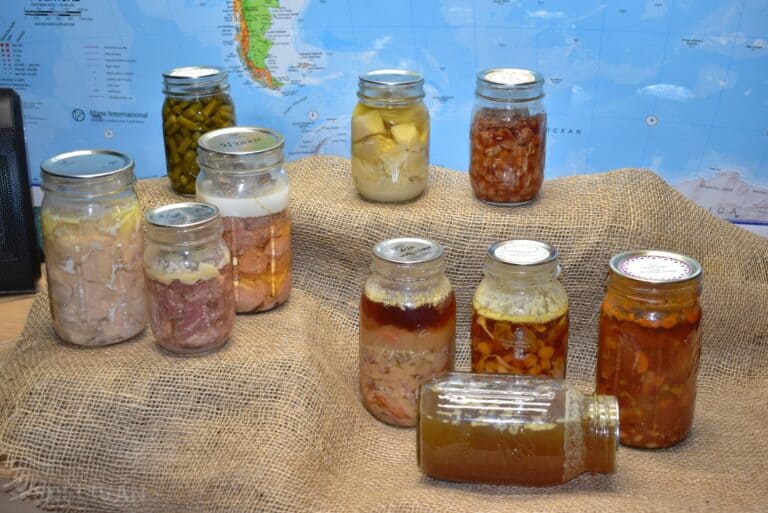
Food
I have put food and water first because these are the first things people generally think of during a disaster. When preparing to bug in, you need enough food to feed everyone in your family/bug in group for the length of time for which you are preparing.
It is critical that you have this food on-hand before disaster strikes. Even a natural disaster from which the region will rebound can stall food delivery to stores for days and grocery stores only have about three days’ worth of food on their shelves to begin with.
If you are prepared, then while everyone else is panicking, you and your family will have full tummies. You will want to stock food for the shorter term and for the longer term, foods such as:
- Ready-to-eat meals (you want to limit MREs as they’re a bad idea to keep eating them)
- Canned goods, which are great because you can open the can and eat the contents cold if need be
- Dried foods, such as rice, beans, oats, granola, powdered milk
- Honey
- Condiments
- Spices and herbs
- Freeze-dried foods
You can find more long shelf-life foods here.
In most situations, you will probably not even need the long-term food items, but depending on what event has occurred, you might need to think even further ahead. For this reason, it is wise to think about food production:
- Growing your own vegetables
- Keeping backyard chickens
- Keeping bees
- Edible wild plant identification
- Fish and/or hunt
- Food preservation
Water
When it comes to water, there are many circumstances in which your access to clean drinking water could be cut off, including a natural disaster or a grid-down situation. You will die in three days if you have no water, so you need to start storing it and you need to start now.
You can buy bottled water from the grocery store relatively inexpensively or you can store tap water. Just be sure to clean and sterilize any bottles you use if you store your own tap water and empty and refill bottles once a year.
The rule of thumb is to have enough water so that there is 1 gallon (4 liters) per person per day. Don’t forget to store water away for pets, too.
Remember that the tank on your toilet and your hot water heater both have potable water in them. You might want to add a couple of drops of bleach to the water in the toilet tank.
If you have warning about an impending disaster, then fill your tubs and sinks with water ahead of time. You can also use rain barrels to collect water, which is an ideal long-term solution.
Finally, it doesn’t hurt to have alternative ways to purify water, such as with water purifying tablets or a purification system.
You should also consider the fact that you need water for other things:
- For cleaning yourself
- For washing out wounds
- Washing clothes
- For watering your vegetable garden
You need to plan ahead to have water for these purposes so you don’t have to use up your drinking and cooking water. Have rain barrels, set up a garden watering system, and make use of your gray water.
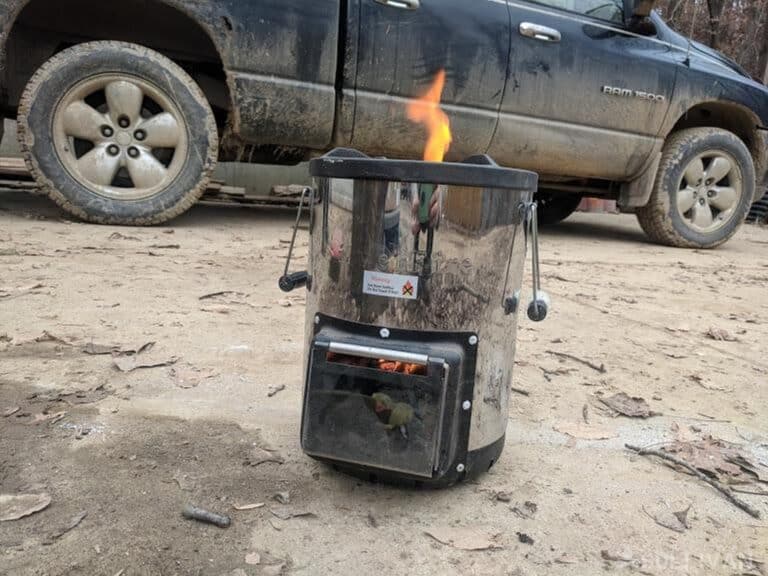
Heat and Power
Heating and power are incredibly important during a grid down disaster. First of all, it doesn’t matter if you have five years’ worth of food and water tucked away if you freeze to death in the first week after the disaster.
If you live in a northern climate, then you need a source of heat during the winter. Ideally, you have a wood stove in your home, but most urban houses don’t have that. If you have a fireplace, that’s something, but fireplaces lose more heat through the chimney than they give to the house.
However, if you install a convection insert in your fireplace (not one that operates with the use of a motor), then it will help draw cold air in and push warm air out, maximizing the heating potential of your fireplace.
The majority of people would have no recourse if they were without power for an extended period of time. The best way to prepare for this situation is to have a couple of forms of backup heat. Here are some suggestions:
- Temporary wood stove: You will need the stove, chimney pipe (including an elbow), a piece of plywood, and a convenient window in the area you wish to heat. Do NOT use a pellet stove, because even though they are more efficient, they don’t burn wood so when you run out of fuel, there is no more. There is always more wood.
- Kerosene heaters: A kerosene heater is ideal for heating a decently large space for an extended period of time. Plus, kerosene has an incredibly long shelf-life and will work effectively even after 20 years of storage.
- Portable propane heater: One of these heaters can throw out a lot of heat and can heat an area for 4-6 hours on one 1-pound tank of propane.
When you do have to have heat during the winter, you should move the family into one room of your home and shut off the rest of the house with doors or blankets.
Cover any large windows to prevent heat loss and ensure you have some ventilation (even a cracked window or outside door) if using a propane heater. Make sure you have lots of warm clothing, blankets, and sleeping bags.
When it comes to electricity, unless you have a generator, you won’t have any if the grid is down due to bad weather or another, more serious issue. That is, of course, unless you have prepared ahead of time and installed solar panels or some other form of alternative power.
If you do have a generator, then be sure to have enough fuel on-hand to run it for an extended period of time, although you don’t have to run it continuously. You can run it 2 hours on and 4 hours off. This is an effective cycle.
Without electricity, you won’t have refrigeration, except in the winter in northern regions. You also won’t have lighting. You can get oil lamps or kerosene lanterns to provide you with light when the sun goes down.
I also want to dip into the issue of security here, which we will cover in more detail below. If everyone else in your neighborhood is without electricity and you run a generator, the sound of that generator will carry and you will have people knocking at your door.
Depending on the situation, a generator can be more of a danger than a help when it comes to survival. Even having some form of lights of candles when the sun goes down attracts attention.
For this reason, you should either install blackout curtains or simply not use flashlights, candles, or other forms of lighting when it gets dark.

Cooking
Cooking your food will become an issue if you have no electricity, so you will need a way to have a warm meal, something that will not only be nourishing, but comforting, as well.
If you don’t have a wood stove or a fireplace that accommodates cooking, then you will need a backup. Here are some suggestions:
- Camp stove: Be sure to stock enough fuel for it.
- Barbecue: Be sure to stock enough propane or charcoal for use over an extended period of time.
- Rocket stoves: These are great for cooking one-pot meals. The best rocket stoves are the ones that use natural materials for fuel, such as small sticks and small pieces of split wood.
The issue of cooking brings up another security issue. If you have a neighborhood full of hungry people who don’t know you have a stockpile of food, as soon as you start cooking outdoors, which you will have to do at some point, the smell of what you are cooking will drift and attract unwanted visitors. Here are some tips on cooking without attracting the neighbors:
- Cook/prepare food inside whenever possible
- Prepare your meals at odd times of day, rather than the conventional meal times, such as late at night or very early in the morning when people are likely to be sleeping
- Avoid using spices while you are cooking and add them to the food after you have gone back inside
- Use freeze-dried foods whenever possible to minimize smell (they only need water added)
- Cook foods in special cooking bags (you can purchase ahead of time and add to your preps) or in foil
- Avoid any form of cooking that sends out smoke (you can use an indoor thermal cooker or something similar)
- Keep your meals small and avoid having leftovers to throw in the trash because this will alert others that you have food
- Burn or reuse as much food packaging as possible
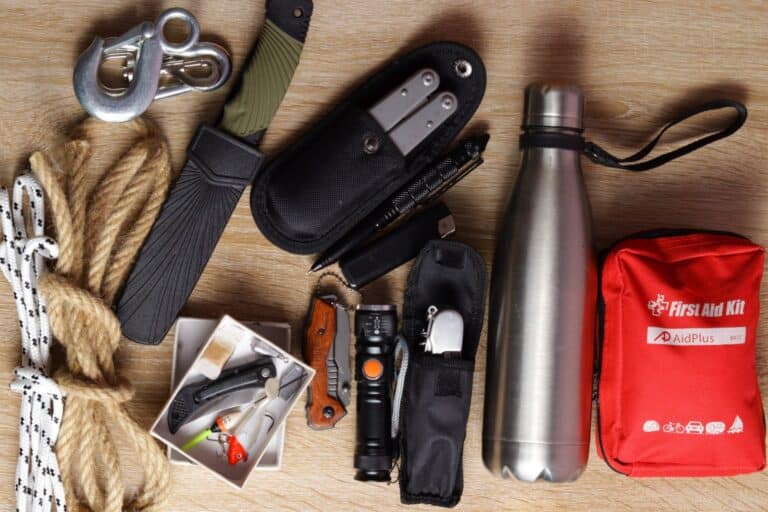
Medical Supplies
When it comes to injury and illness, you might not be able to get to a doctor or a hospital during a disaster.
You might not even be able to get to a pharmacy and there is a good chance they will be running out of supplies. You need to have your First Aid training up-to-date and have a very comprehensive store of First Aid supplies.
You should also have some more unusual or advanced medical supplies, such as pure alcohol for sterilization, suture needles and thread, splints, and anything else you can think of. See a complete list of what you should have in this article and be sure to learn how to use anything you store away.
Personal Hygiene
You will need to have ways of keeping yourself clean during an extended period of time without water and electricity.
You won’t have access to running water and you won’t want to use up you precious water supply by having sponge baths every day, so having a stock pile of the following helps:
- Baby wipes
- Extra toothpaste and toothbrushes
- Soap
- Toilet paper
- Feminine hygiene products
Last but not least, you should follow these hygiene best practices.
Comfort Items
When you are in an emergency situation and you have to bug in for an extended period of time, having a few comfort items around will help you make it through. Store away some of the following:
- Chocolate
- Alcohol
- Cigarettes
- Coffee
- and more.
Since you are bugging in at home, chances are you have games, activities, and books to help pass the time. Not only will these things help comfort you; they will also be items you can use for barter if things get bad enough and go on for long enough.
Sanitation
If water is unavailable and there is no electricity, then it is very likely that there will be no garbage pickup and no way to flush the toilet. You will need to find ways to deal with the waste you create when municipal infrastructure is down, even temporarily.
When it comes to toilet use, you can get camping toilets that allow you to dispose of your waste in heavy-duty plastic bags. If you don’t have one of these, then any 5-gallon bucket and strong garbage bags will do the job.
You should also make sure you have strong garbage bags on-hand for trash. If things go on for a while before the infrastructure gets back up and running, you don’t want garbage piling up. Find a place to bury it or burn it as you produce it.
Getting Home Scenarios
There is a high chance that not everyone in your family or group will be home when disaster strikes. That includes you.
Everyone in your family who is any distance away from home should have a Get Home Bag (GHB) that is filled with the supplies needed to help them get home as quickly and safely as possible.
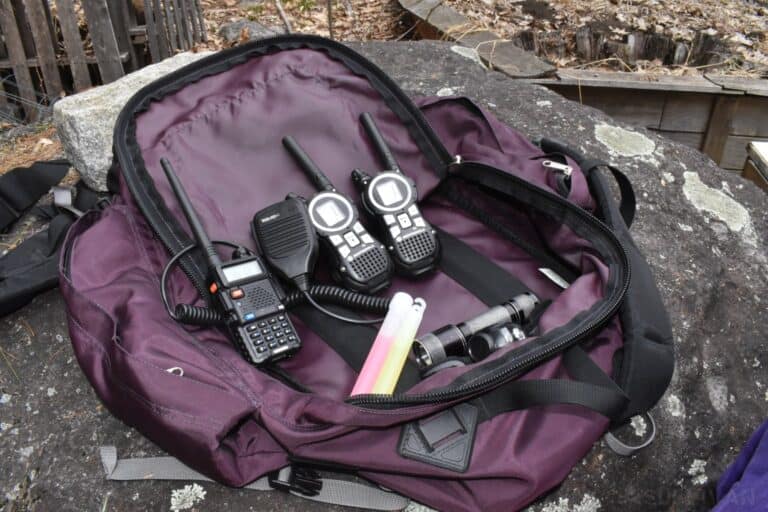
Emergency Communications
Do you have a way to keep up-to-date on what’s happening in your community, in your city, in your country and the world?
You need to be sure you have a radio that you can power without electricity. This can be solar-powered or hand crank, but be sure you have something.
It is also very useful to be able to keep in touch with others in the prepper community, people you have made a connection with or people with whom you have formed a mutual assistance group (MAG).
Even just extended family who will be joining you at your bug-in location will need to communicate with you.
The best plan is to get your radio license so you are legally allowed to operate a ham radio. If you and others in your group do this, then you will be able to keep in touch with each other over long distances.
Whether or not you have this means of communication, you should consider setting up a method of communication that doesn’t require technology.
This might be a set of signs and symbols you can post for others to see and they can be used to say if you are in danger, if your home neighborhood is safe, if you had to bug out, and which way you have gone.
Learn more about emergency communications here.
Security and Self-Defense
This is something many people fail to consider, but it is not something you can leave out of your bug-in plans. The simple truth is that when disaster strikes and hard times go on for too long (and it doesn’t take more than a few days), people get desperate.
If you have food and water and warmth and other people know it, yours will be the first door they knock on when the grocery store shelves are empty and it’s cold outside. Thus, the first rule of security is to not tell ANYONE you are prepared to bug in.
You will also want to prepare your home so it is more defensible, because let’s face it, the average home is not a fortress. This means ensuring that it is difficult for unwanted people to enter your home.
In fact, once they enter your home, you have most likely lost the battle already, so you need to keep them out.
Your doors should be secure and solid, well-locked with deadbolts; preferably made of solid material, such as steel or wood; attached to the door frame with steel supports; and with a bar you can put across the door to secure it from the inside. In addition, do as much of the following as possible:
- Solar-powered motion sensor lighting around your property and trip wires
- Remove as much cover (places unwanted people can hide) as possible within a 100-meter radius around your home
- Put up barriers, such as fences, rock walls, ditches, ponds, dense brush that will keep people from getting close to your house
- Design your landscaping to direct anyone on your property where you want them to go, using pathways, thorny bushes, etc. and be sure you have a good vantage point of any potential area of cover you have provided
- Rose, raspberry, or other thorny, defensive bushes beneath all main-floor windows
- Strong window locks and cut wood-block stoppers inside windows and boards to cover windows when necessary (be sure not to completely block your view of outside)
Once your home has been reinforced, you will need to think about self-defense, which means having the proper self-defense weapons and the training to use them safely and effectively.
This is not what anyone wants to think about, but when the situation goes south, you will want to be sure you and your family are safe from desperate people and criminals who want to take advantage of you.
Just remember that no matter what type of a weapon you choose to keep at home in case you need it, it will be more of a liability than an asset if you are not properly trained in how to use it.
This includes guns, cross bows, knives, stun devices, staffs, and other self-defense weapons.
In addition to preparing your property and having a way to defend yourselves, you will need to implement some kind of operational security (OPSEC).
When disaster strikes, you want to stay as low-key as possible, but you can’t just hide and hope for the best. Have members of your groups secure the perimeter and keep guards on duty at all times.
Choose good vantage point from which you can see what is happening and determine the most concealed ways of getting to and from those vantage points.
Be sure that you know who is nearby and who is coming and going, but do so in a way that doesn’t draw suspicion. If you can get your neighbors on board, set up a neighborhood security detail to help keep everyone safe.
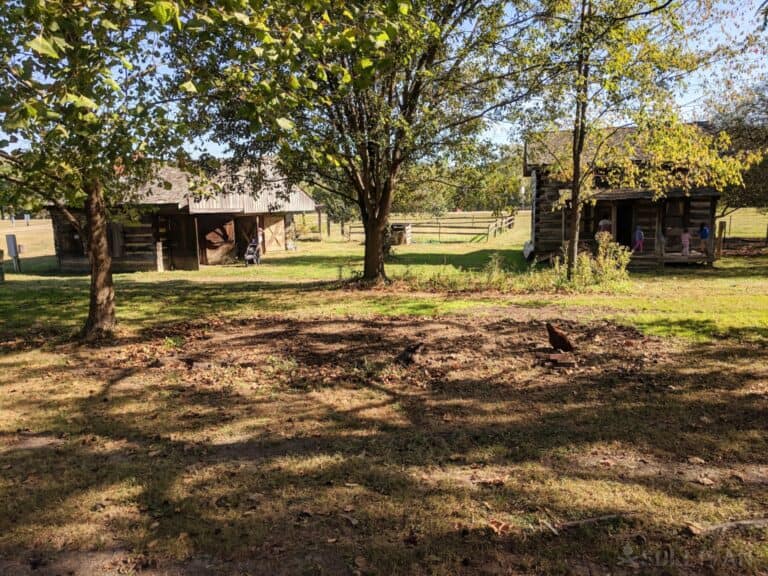
Homesteading is Your Best Bet for Long-term Survival
Living on a working homestead is seen by many preppers as something of a crown jewel achievement.
Your own land, your own crops, animals and home, typically well away from the hustle, bustle and chaos of heavily populated areas.
Whether or not the homestead serves as the foundation for a small business may or may not be a feature.
And although many look at homesteading as an alternate lifestyle choice these days, it is worth pointing out that, for many throughout history, it was just living.
Pure and simple, much of what we call survival or contingency skills today or just the skills of everyday life for our great grandparents, and continue to be the standard of living for many people around the world.
In my opinion, adopting this lifestyle is paramount if one is truly serious about lasting a decade or longer in the aftermath of a society toppling event.
Sure, it is possible to live through all sorts of disasters and emergencies lasting anywhere from a couple of days to a year pretty much anywhere, but only the sustainability of a real, working homestead will give you the supplies and redundancy you need to go the distance.
That being said, really doing everything yourself on a homestead is an awful lot of work, and it’s something that is best serviced by a group of people or a family unit at the minimum.
You’ll need a wide variety of skills to remain truly self-sufficient, everything from farming and animal husbandry to blacksmithing, carpentry and more.
Many of the skills in prerequisites we discussed in the rest of this article are just as applicable on a homestead as they are living anywhere else, but the life skills necessary to stand up and run a homestead successfully are better detailed in another article.
Have a Bug-Out Plan
With all of your preparations to bug in, you should still have some sort of plan prepared in case you need to bug out. If the power grid is down permanently, a pandemic has moved into the city, or the city has become unsafe for some other reason and you have to leave, then be prepared. Have a backup place to go, if need be.
If you can’t set up a place ahead of time, then prepare yourself for living in the wild and on the road until you find a safe place to be. Have the proper tools and skills prepared ahead of time in case this is required. It would be foolish to be unprepared to bug out, should the need arise.
It’s In Your Hands
How prepared you are to bug in is completely within your control. Do as much as you can as quickly as you can without short-changing yourself and your family in day-to-day life.
Even if you are only partly prepared when a catastrophe happens, you will still be far more prepared than the average person and you will be able to protect and care for yourself and your family during a time that would otherwise mean suffering and hardship.

An urban prepper and rural wannabe, Karen has been working as a freelance writer for a decade and prepping for about half that time. She has gathered a wealth of knowledge on preparing for SHTF, but there is always more to learn and she has a passion for gathering and sharing that knowledge with other like-minded folk. Karen lives in London, Canada with her two children and plethora of cats.

Thanks for such a wonderful article. Bugging out is NOT possible for me as I am currently disabled with multiple disorders. I’ve been trying to prep for over a year now but my friends (& caregiver) don’t want to think about it. I live in an apartment complex, have been growing a small garden on my back patio, but am having a LOT of problems with the children who live in my complex (there’s only 59 units). Children nowadays don’t seem to have respect for others property. I don’t have a fence around that patio but it’s the only place that gets a lot of sunlight. My front patio is larger & has a gate, but not very much sun. Any advice for my problems would be greatly appreciated. Thanks.
Glad you enjoyed the article. I’m sorry that your friends and caregiver are not supporting your desire to be prepared. It’s difficult for anyone when that happens. My suggestion would be first to just focus on your EDC items and add them to your shopping list. A whistle or other way to signal for help is reasonable considering you aren’t fully able to care for yourself. As far as stockpiling, try just gradually items a couple at a time to your shopping list. Research what types of natural disasters could happen in your area and focus your conversation with friends and caregivers around being prepared if something like a tornado or earthquake would occur. If you focus on the fact that you’re afraid to be stranded without a way to call for help in a natural disaster they may be more accepting of that. I wish you luck.
just found this site. this article is just great and full of such good information. thank you for posting this.
In regards to HAM radio usage; you do not need a license if there is an active emergency or crisis.
Actually, an amateur radio licence is required by law even during an emergency. See 47 CFR Part 97. Only in the dire case if a person’s life is immediately at stake may you transmit on amateur radio frequencies without a license.
or what?
If you have solar panels or wind power, consider building a battery bank as well, make it scalable so you can add more capacity (batteries) over time, also if you have a stream or river consider hydropower
You can also use your generator to charge your batteries, plus many generators can be converted to lpg or natural gas which can make them much quieter